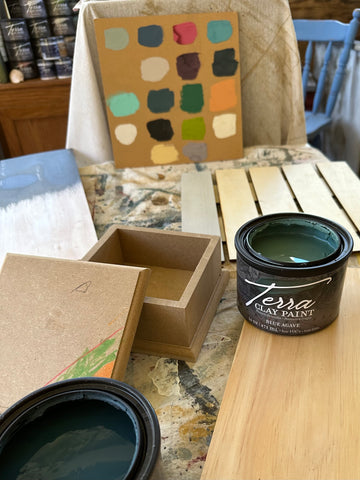
This was my first time using Terra Clay Paint and I’ll begin by saying that this is not a perfectionist’s paint.
Terra Clay Paint is for the artisan. The painter who enjoys texture and layering, who loves blending and playing — and watching colours mix, layer and work together.
Terra is a highly pigmented, clay-based paint that reactivates with water. It’s a thick, viscous paint which means pigments and binders stay suspended so it doesn’t need stirring. Just open the lid and start painting.
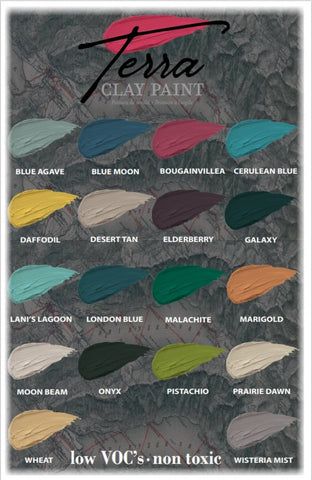
The Terra Clay Paint palette is rich and earthy. The colors range dramatically within the 18 colour palette, from the subtle neutral of stone and desert, to the vibrant fruity tones of the tropics or the icy plains under a winter night sky.
I hadn’t used a clay-based paint before so after my training, I gathered paintable items and started in!
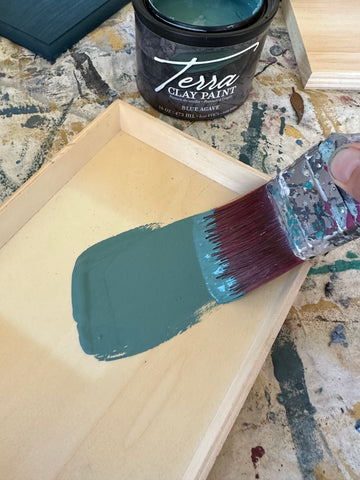
For my first project I gave a ready-to-paint wooden tray a coat of Blue Agave, a soft, coastal green-blue. Terra Clay Paint, like milk paint, dries to a lighter shade. I rarely say this, but this is a one-coat paint. It’s thick, viscous and highly pigmented. I was completely satisfied with the look and feel of just one coat of Terra Clay Paint.
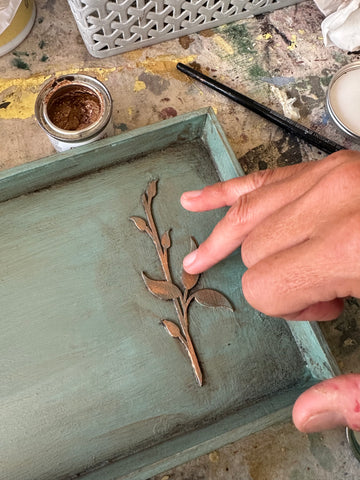
I sealed it with Terra’s new sealer, Terra Tuff. The sealer slightly deepened the paint colour. For fun, I added a layer of Dixie Belle Glaze in Copper Bronze, then jazzed up the PolyOnlay motif with layers of Gilding Wax in Bronze and Copper.
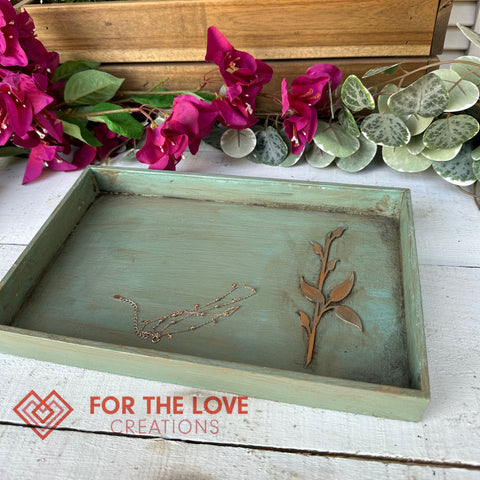
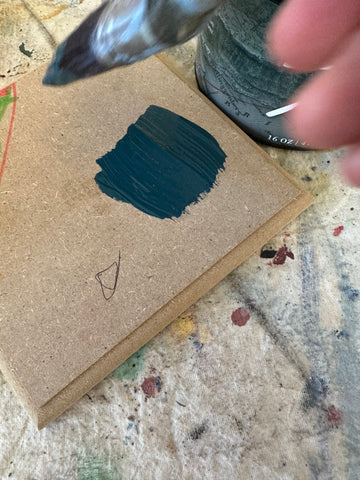
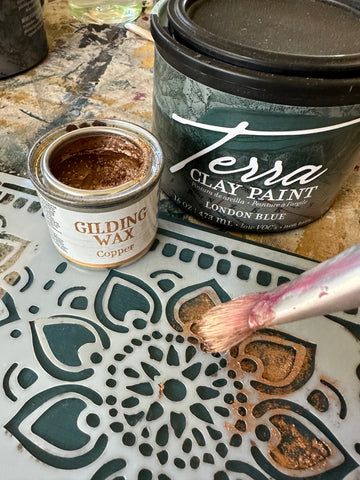
I finished it off by stencilling a flower motif from the Lotus stencil using Dixie Belle’s Gilding wax in Copper.
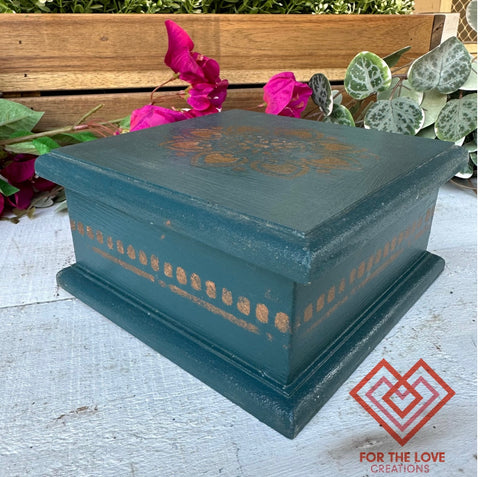
My third project was a hanging plaque that I painted with Terra Clay Paint in Wheat.
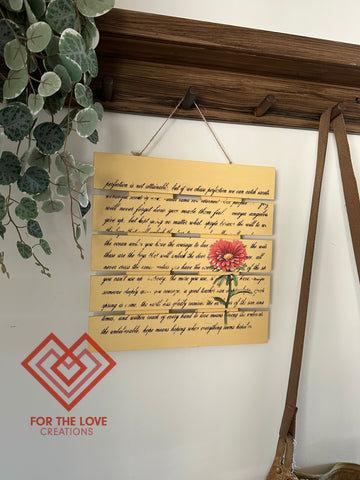
This warm, earthy yellow is true to its name. When the paint was dry I applied a Redesign with Prima transfer and sealed it with two coats of Terra Seal (same product as Clear Coat Flat.)
Sealing Terra Clay Paint
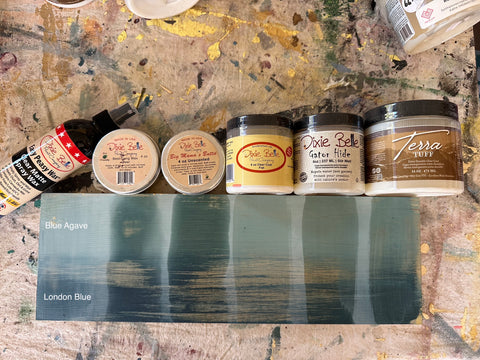
- The clay paint is very absorbent and sometimes inconsistent so the finish can appear blotchy with oil-based or watery topcoats.
- Although Terra Clay Paint dries lighter, the right topcoat takes it back to its deeper, original colour.
Clear winners:
Keep using these topcoats, just not with Terra:
Additional Tips on Terra Clay Paint
- Layering: Terra Clay Paint is easily reactivated with water or water-based products. If you want to layer the paint either seal the first layer before applying the second layer; or the first layer can be a colour from the chalk mineral paint line. Chalk Mineral Paint won’t reactivate when the layer of Terra Clay Paint is added. You can also layer Terra Clay Paint over Silk Mineral Paint.
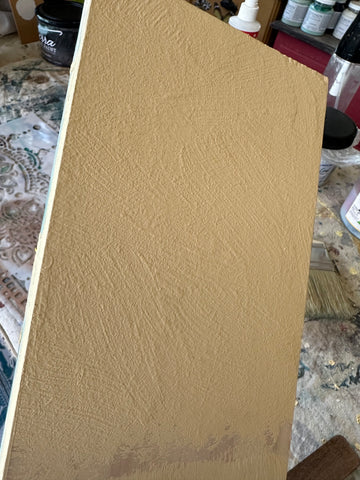
- Texture: There’s no self levelling here. All you can do is embrace the texture. Although you’ll get a slightly smoother finish using a synthetic bristle paint brush, there will still be brush lines and stroke marks. Sanding doesn’t smooth it out. You can thank all that beautiful, natural clay for this. Embrace the texture and create even MORE texture with a natural bristle brush using uneven, criss-cross brush strokes, or pounce the bristles over the surface to create peaks and valleys.
- Staining the paint: I stain painted surfaces all the time but Terra Clay Paint, as I’ve already mentioned, is too absorbent. My first and only attempt at staining London Blue turned very black. Save your stains for raw wood or chalk mineral painted surfaces.
My final thoughts:
This is far from a traditional acrylic paint, I truly enjoy its quirks and believe there is still so much left to explore. It’s perfectly imperfect and lovely in so many ways as long as we understand its properties and preferences.
More Terra Clay Paint projects to come!
All the best with your painting projects and please get in touch if you have any questions. We are here to help!

Read more about Terra Clay Paint here: https://dixiebellepaint.com/paint/terra-paint/


Leave a comment